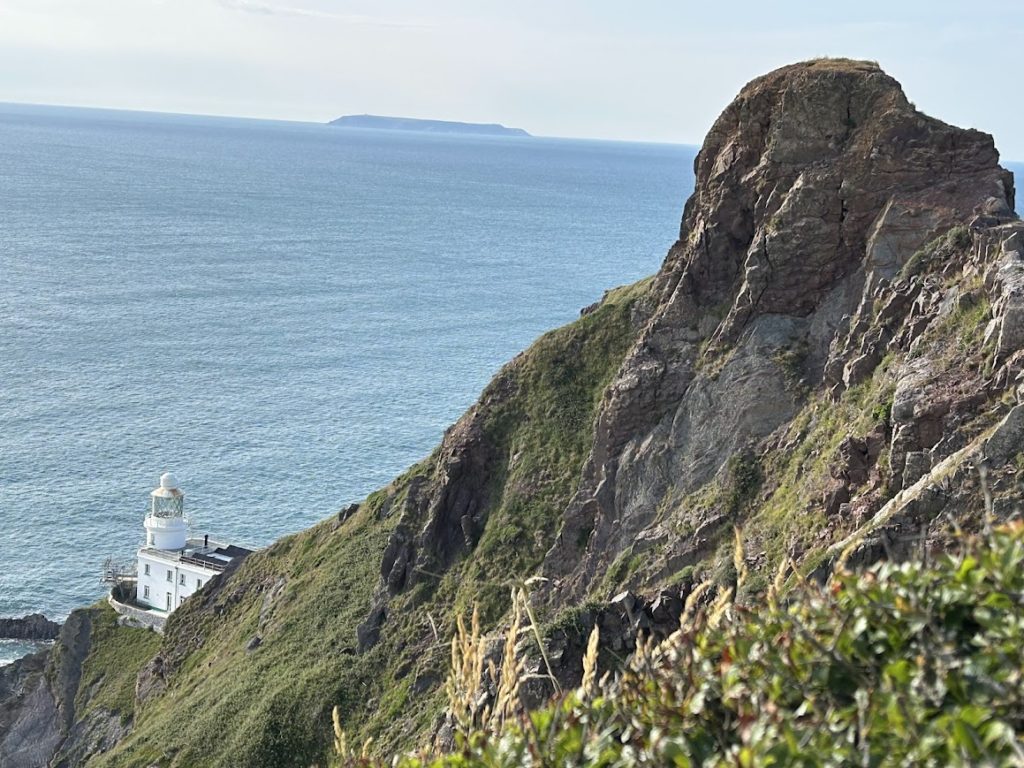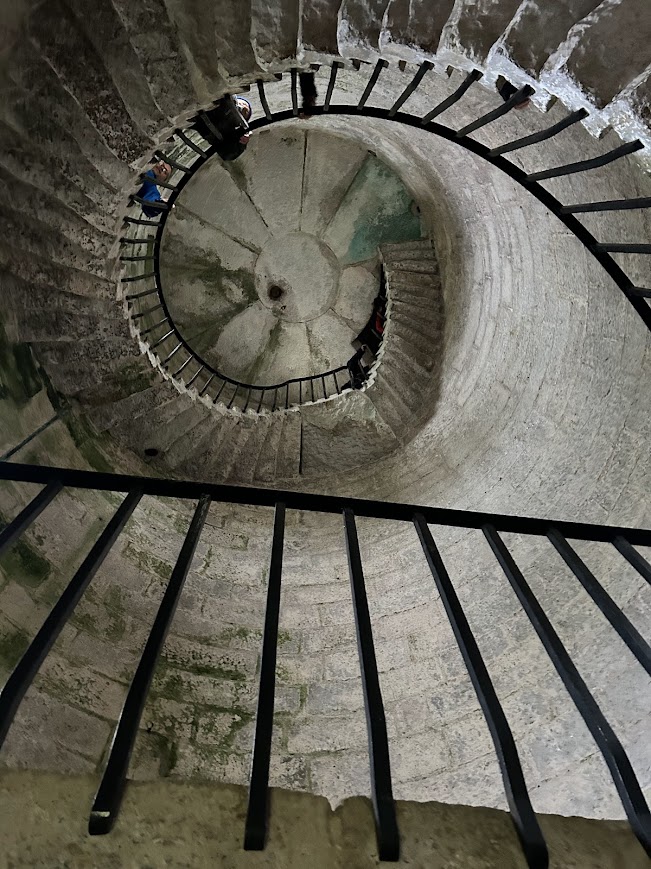Perched at my desk on a Saturday morning I feel like I’ve become my desk. Flat, smooth, empty, waiting for a stream of creativity to colour me in. Writing Lundy, an island for all seasons, helps.
Lundy on a Friday
After two days adventuring in North Devon, visiting magical Lundy Island, I should have returned uplifted. And I am that too, moved and unsettled by the mysterious effect the visit has had on me. Last time I came one distant June past, I was a 20-year old version of me suffering from hay fever.

Coincidence or synchronicity
I’ve yet to fathom how the woman on my vision board drew me to Lundy, except she’s wearing a Dry Robe exactly the same as my own.
As I disembark MS Oldenburg, I am struck by how much the Landing Beach in front of me also looks like my vision board. A rocky shoreline of large smooth boulders that falls away to a sandy beach when the tide goes out and sees the arrival of Bluetits* to brave the waters.
*a cold water swimming community

Conjoing of a sloth and puffin
Lana’s vision board story (see Synchronicity: the mysterious web of meaningful connections), illustrates how the conjoining of a sloth and puffins resulted in her taking a new direction. She had no particular affinity with either creature yet their presence on her vision board lured her imperceptibly to North Devon.
In Appledore she received the answer to a question that had been taunting her: “Where shall we move to next?” She knew instantly she stepped onto the quay it was Appledore: “This is it!”
Independently I’d been lured to this corner of the West Country. Only the day before I heard Lana’s story, we’d booked a boat trip to see the puffins on Lundy Island. In Appledore, we traced Lana’s footsteps into the very same shop where she’d discovered her puffin and sloth from her vision board, sitting incongruously together.
After Appledore we waded at low-tide through the ever-receding sea at Westward Ho before descending the cobblestone streets of the privately-owned harbour village of Clovelly, after most day-trippers had gone.
At sunset, we hiked around Hartland Point, recognizing the distinctive trapezium in the distance as Lundy Island, knowing that the next day we would be crossing these waters to get there.
Lundy is like one of the three towering Mesas in Arizona, the Hopi Indians call home. Its land mass sits in the actual sea rather than the large inland sea that once surrounded the Mesas. Lundy is owned by the National Trust and managed by the Landmark Trust.

An island for all seasons
Overnight, the blue wash of sky that graced our arrival on the mainland was replaced by a solid band of dark grey cloud that hung over Lundy to deliver continuous rain.
Undeterred, we crossed the 2-hour stretch of Atlantic before breakfast. Soaked through before we arrived, our waterproofs were never enough for this. If I’d worn my Dry Robe like my vision board had ‘advised’, I would have been warmer and drier – but my logical head had got the better of me.
Lundy is a magical, mysterious granite outcrop, seeped in history. On arrival an Atlantic grey seal met us. Friendly and inquisitive, these spotty creatures appear to stare at you down their long snout. We then began the long and gently-winding ascent through lush undergrowth to the area affectionately known as ‘the village’.
Get the gist
Lundy attracts all kinds of ‘gists’; ornithologists, geologists, archaeologists, botanists – but Puffins are by far the main attraction.
Puffins look like small penguins but Penguins they’re not. They are small auks, happily coexisting with other family members, like guillemots and razorbills.
Admittedly all we could see with the naked eye was their white expanse of belly, their black cap and a perky orange beak because our binoculars had taken in as much water as us. These adorable birds stood motionless on ledges as if contemplating the sea but deciding not to venture forth on this stormy day.
As the clouds closed in and the mist turned to fog, we could see no further than 12m in front of us. Dark shapes loomed large and were an early warning of a chance encounter … we weren’t sure with what, human, animal or building.
We pressed on sharing ancient tracks with primitive Soay sheep, a herd of Sika deer of Japanese origin, feral goats and a herd of highland cattle.
A kind couple took pity on us and gave us their map, which was sodden within minutes. We were forced to double back to the Marisco Tavern to consume hot tea and chocolate cake (such hardship) and obtain a dry map. .
Even so we got a taste of the dramatic rock formations on the exposed north coast. We sheltered in St Helen’s church, which told the history of the island in pictures. And we spiralled the narrow granite-hewn steps in the abandoned lighthouse to the observatory tower, only to see absolutely nothing when we got there.


A slower pace of life
I love the island vibe. It was like resting back into a slower-paced, uncomplicated existence, which offered an immediate connection with nature. My ‘flatness’ on my return had nothing to do with the weather and everything to do with leaving the island sooner than I would have liked.
I fantasized as to what it would be like to spend a week in one of the 23 Landmark properties. To explore the different parts of the island at leisure with writing, sketching, and reading woven in-between. To pass a pleasurable evening in the Marisco Tavern – the hub of island life – exchanging stories and sightings, or playing scrabble with the cross-section of explorers drawn there.
Lundy is a very special place whatever the weather. Soggy feet, damp body, cold hands, dripping hair, I wouldn’t have missed it for the world. And clearly my vision board never intended that I should.
